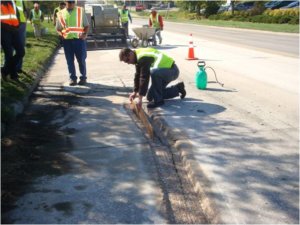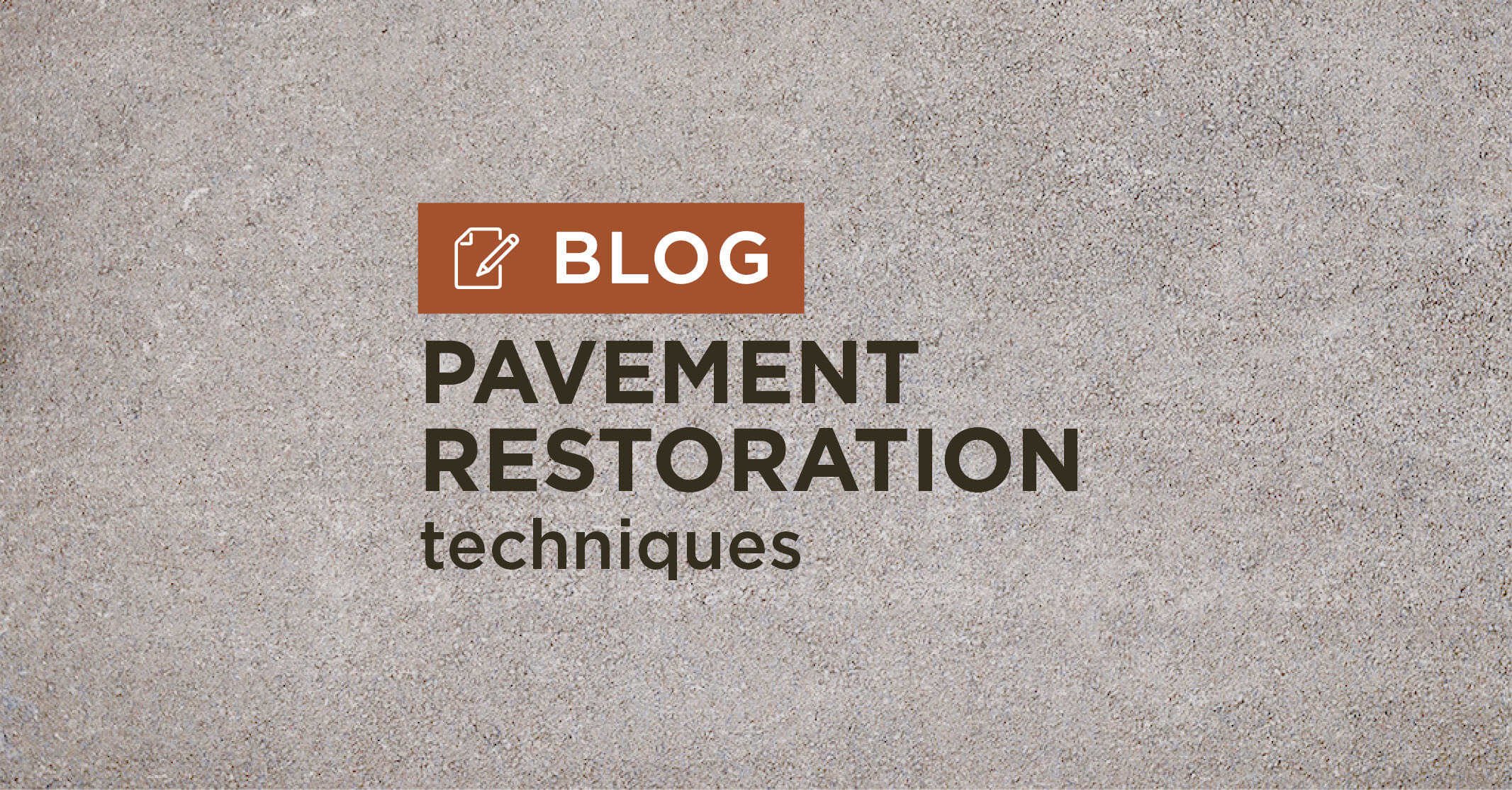Plan for Street Preservation to Maximize Funding Dollars
There are numerous common issues that can have a negative impact on a pavement network’s performance. Pavement faulting, differential movement, joint deterioration, poor drainage, and subgrade instability are just a few of these concerns. In certain regions of the country with particularly harsh winters, several freeze-thaw cycles over several months can accelerate these problems. An effective pavement management plan protects your pavement network and identifies preservation needs before minor deterioration leads to the need for complete street reconstruction.
Using a database that combines pavement condition inventory, location, and historical information, along with analysis tools and prediction models, the Snyder & Associates team can help your community develop a long-term pavement management plan. This plan will better leverage your budget and provide guidance for using the proper sustainable preservation techniques.
These techniques often include the use of Concrete Pavement Restoration or CPR. Much like its shared acronym, CPR restores life to worn-out pavement. However, CPR isn’t just one simple preservation process, instead, it consists of a handful of techniques that must be applied to match certain pavement conditions, during certain stages of pavement distress. As explained by Jerod Gross, Civil Engineer with Snyder & Associates, “…the understanding of when and how to apply preservation techniques comes partly from a well-organized pavement preservation policy.”
This policy typically states “what is the goal, what is the condition of the roadway, and what kind of service life do you want out of your roadway,” says Gross, who has also worked with the National Concrete Pavement Technology Center on pavement preservation management.
Four Steps of Proactive Pavement Management
Our process for setting policy steps may vary by project, region, or municipal government requests, however, we’ll generally follow this four-step process for developing the proper plan.
- Data Collection — Gather information and identify pavement age and history. Information can be logged into a spreadsheet or a program such as MicroPAVER™ or dTIMS®. In Wisconsin, the WISLR system is an option for local governments.
- Condition Assessment — Inspect pavements by quantitatively measuring distress types and distress severity levels. Using a standardized rating scale, such as Pavement Condition Index (PCI), pavement sections will be ranked according to the quantity and severity of distress. Once PCI information is known, a map can be created to provide a visual representation of the areas with the greatest need for preservation.
- Approach Planning — Predict and model the future condition of the pavement network by applying different budget strategies or network PCI goals. Prioritize rehabilitation and reconstruction strategies to develop a Capital Improvement Plan (CIP) that will save money long term.
- Plan Implementation — Adoption of your CIP and annual preservation strategies to maximize the use of available funds.
Common Pavement Distress Types
Understanding the root cause of common pavement issues allows you to correct small problems before they become major concerns. This listing of distress types helps guide our decision process during condition assessment.

Construction crew beginning to install new pavement
- Subgrade Stability — The strength of the soil below the pavement can impact pavement performance. Unstable soils must be prepared, conditioned, and sometimes stabilized with chemicals or man-made geosynthetics to achieve the desired performance. In some Midwest soils, drainage also plays a critical role in the stability of the subgrade.
- Joint Performance — Joint deterioration may be caused by one of many factors including an inadequate air entrainment system or insufficient pavement drainage. Incorrect water to cement ratio in the pavement or a failed joint sealant can also lead to premature joint deterioration.
- Faulting — Slab faulting occurs when one slab is higher than an adjacent slab in a roadway system. This can be caused by slab pumping, settlement, curling, or warping. Proper load-transfer design, construction, and a subdrainage system will minimize the potential for faulting.
- Fatigue — Improper pavement thickness can lead to pavement failure from fatigue cracking. Moisture infiltration and continued freeze-thaw cycles can then accelerate the surface deterioration.
- Material-Related Distress — Sometimes distress is caused by an undesirable quality in pavement materials or a unique reaction between pavement materials. Proper quality certification of pavement materials and the use of supplementary cementitious materials minimizes the risk of material-related distress. Plus, there are treatment options and design solutions to minimize the potential for recurrence.
Innovative Pavement Rehabilitation Solutions
Concrete preservation methods should be thought of as a toolbox of techniques. Sometimes there could be two or three different tools that an agency will want to use, but care must be taken in going through what Gross refers to as a “hierarchy of techniques.”
“For example, if you have a roadway that needs concrete full-depth patching or partial patching or if you have faulted joints, you will do the full-depth repairs before anything else,” Gross says. “Then you would preferably perform some diamond grinding if you had funds that would allow that. The last technique would be to reseal those cracks because, with both concrete and asphalt roads, we want to keep water out, especially in the upper Midwest where we want to eliminate or minimize freeze-thaw distress.”
The more common restoration methods include full-depth repair, partial-depth repair, diamond grinding and grooving, slab stabilization, dowel bar retrofitting, and pavement overlay. Each one of these techniques has its own timeline and limitations for usage depending on the pavement condition.
Full-Depth Repair
Full-depth pavement repairs often involve placing precast sections of pavement in heavily populated areas where it isn’t feasible to close a road for extended periods of time. “They go in manufactured onsite, so we can dial them into the existing pavement and get the road open right away,” Gross continues.
Partial-Depth Repair
A partial depth repair will restore structural integrity, improve ride quality, extend service life, and reduce load impact by replacing the upper portion of a deteriorated slab. The use of durable concrete mixes will ensure long-life pavement performance starting at the joints.
Diamond Grinding and Grooving
Diamond grinding restores smoothness, improves friction, and reduces noise by removing a thin layer of pavement from the surface. “That’s a two-step process where you have a diamond grinding up at the top and then come back and do a grooving where the blades are spaced out about three-quarters of an inch,” Gross says. Another important effect of diamond grinding is the increase in surface texture and the resulting improvement in skid resistance.
Slab Stabilization
This involves filling voids under the pavement with injectable cement grout or polyurethane. This is a relatively non-destructive technique, Gross explains. “If you’re using a cement grout, you’re going to end up with a 1- to 2-inch hole in a series on a panel. If you’re using a polyurethane, you only need about a half-inch hole.”
Dowel Bar Retrofitting
To prevent faulting and effectively transfer wheel loads across slabs, the installation of dowel bars at existing traverse joints or cracks is a common remedy. This technique restores load transfer from concrete panel to concrete panel. “If you have faulted joints or there is a load transfer between the joints, crews will use a cutter to create three slots and put three bars on each wheel path, so you’ll have a total of six bars per lane,” Goss says. He adds that this technique improves long-term rideability.
Pavement Overlay
Causing minimal construction disruption, an overlay of asphalt or concrete can extend pavement life and improve ride quality. This method is typically used when there is only minor damage to the existing pavement structure.
Avoiding Common Pavement Preservation Pitfalls
“Our primary goal with pavement management and pavement preservation techniques is to create a substantial jump in quality for the money spent,” Gross says. “If you pick the right techniques at the right time, you can bring a roadway up to an excellent condition.”
For example, partial-depth repair and diamond grinding can improve a concrete road’s quality and extend its life many years at a minimal cost. But if used during the wrong conditions, problems can occur. “If you let a road deteriorate too far and don’t choose the right tool to correct the deterioration, or if it’s too far down the curve to provide a preservation technique, you’re spending more money for minimal gain,” Gross adds. “So, it’s important to pick the correct tool for the roadway in question.”
The aim is to maximize preservation dollars and to act before a road is too far gone. Waiting too long can lead to agencies spending four to 10 times more to restore a road, making it critical to recognize where your roadway is on a pavement management curve.
Your pavement network is a valuable asset, and it’s essential to protect it by implementing a planned approach to save money. Our team has years of professional experience in the development and implementation of fiscally responsible pavement management programs.
